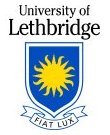Math 2565, Spring 2020
Area and Volume
January 30, 2020
| Sean Fitzpatrick |
|---|
| University of Lethbridge |
 |
Warm-Up
Find the area of the region below:
Volume by slices
If we can “slice” a solid (like a loaf of bread) and describe the (cross-sectional) area of each slice, we can reconstruct the volume:
Examples: pyramids, cones.
Solids of revolution
Obtained by “revolving” some plane region about an axis.

Revolving the above region produces this solid
Discs and washers
If the region contains everything between a curve and the axis of rotation, we get a disc.
If the region is between two curves, we get a washer.
Examples
Find the volume obtained by revolving the given region as indicated:
Between \(y=4-x^2\) and the \(x\) axis, about the \(x\) axis. (About \(y=-1\text{?}\) \(y=4\text{?}\))
Between \(y=x\) and \(y=x^2\text{,}\) about the \(x\) and \(y\) axes. (About \(y=1\text{?}\) \(x=1\text{?}\))
The triangle with vetices \((0,0), (1,3), (3,1)\text{,}\) about the \(x\) axis, \(y\) axis, \(x=3\text{,}\) \(y=3\text{.}\)
Cylindrical Shells
Take a can with no bottom or lid, and cut vertically. You get a rectangle. Area:
Shells can be useful if it's hard to get \(x\) as a function of \(y\) to do washers.
Examples
Find the volume of the solid as described. Use shells unless this is unreasonable.
Bounded by \(x=0\text{,}\) \(y=0\text{,}\) and \(y=1-x^2\text{,}\) about \(y\) axis and about \(x\) axis.
Bounded by \(x=0\text{,}\) \(y=0\text{,}\) and \(y=\cos(x)\text{,}\) about \(y\) axis and about \(x\) axis.
Bounded by \(y=x^2-2x+2\) and \(y=2x-1\text{,}\) about the \(y\) axis, \(x=1\text{,}\) and \(x=-1\text{.}\) (About the \(x\) axis?)